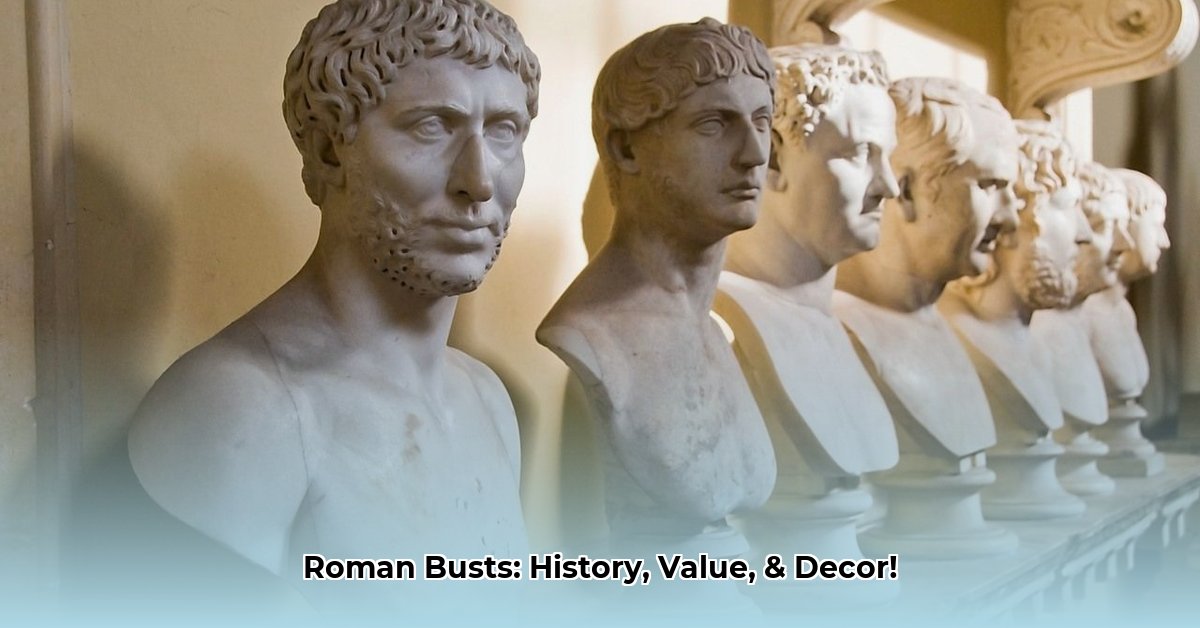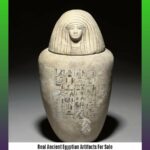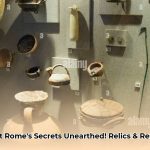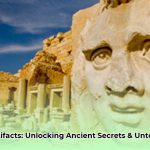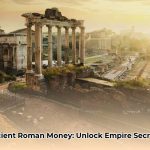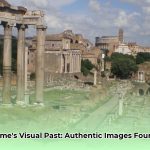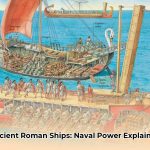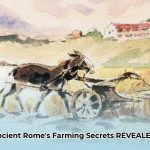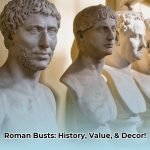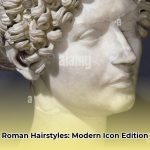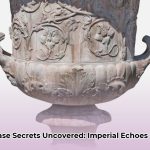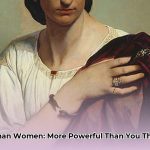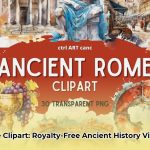Have you ever truly paused to consider the silent, stony gazes of ancient Roman busts in museums or private collections? Far more than mere historical artifacts, these compelling sculptures are remarkably detailed time capsules, intricately woven with stories of power, ambition, and the very essence of human identity in the Roman world. From the unvarnished realism of early Republican portraits to the idealized grandeur of Imperial figures, Roman busts encapsulate a profound artistic and social evolution, offering an invaluable connection to a bygone era. They allow us to glimpse the faces of formidable leaders, contemplative philosophers, and even everyday citizens, each etched with a unique narrative.
This comprehensive guide will explore the profound historical significance of Roman portraiture, delve into the aesthetic and technical intricacies that define authentic pieces, provide practical advice for their meticulous care and discerning display, and reveal the most notable places where you can encounter these masterpieces firsthand. Prepare to unlock the enduring secrets behind those enigmatic, silent visages.
The Evolution of Roman Portraiture: From Verism to Imperial Grandeur
Roman busts, originally rooted in deeply held ancestral traditions, transformed over centuries into potent visual statements, meticulously reflecting shifts in societal values, political messaging, and evolving artistic ideals. They reveal not only the unparalleled skill of Roman artisans but also the changing relationship between image, authority, and the individual.
Republican Realism: Character Etched in Stone
Imagine an ancient world where portraiture celebrated not flawless beauty, but stark, unvarnished truth. This was largely the defining ethos during the Roman Republic (509–27 BCE). Early ancient Roman busts epitomized verism, a powerful style of portraiture that emphasized naturalistic and often unflattering detail. Every wrinkle, scar, and unique facial feature was meticulously captured, reflecting the gravitas, wisdom, and life experience of Roman citizens, particularly the elder statesmen and patrician elite.
This profound emphasis on realism was deeply influenced by imagines maiorum (ancestral masks). These were wax death masks molded directly from the faces of deceased family members, meticulously preserved and displayed prominently in the atrium (main hall) of aristocratic homes. This practice profoundly underscored lineage and a family’s deep-rooted history, serving as a powerful visual résumé of one’s esteemed ancestry and contributions to the Republic. During elaborate state funerals, these masks would even be worn by actors leading the procession, bringing the revered ancestors “back to life” for the public, thereby reinforcing the family’s social standing and political legitimacy. These physical representations of a family’s heritage were not merely decorative; they were vital tools for maintaining power and prestige within Roman society.
Imperial Idealism: Power and Propaganda Manifest
As Rome transitioned from a republic to a sprawling empire under Augustus (27 BCE–395 CE), the purpose of ancient Roman busts shifted dramatically. Emperors quickly recognized these sculptures as potent propaganda tools, vital for shaping public perception and projecting their supreme authority across vast territories. Unlike the raw realism of the Republic, Imperial busts often depicted rulers in idealized, often perpetually youthful and vigorous forms, radiating divine authority and unwavering strength.
Consider Augustus, the first Roman emperor; his portraits consistently presented a youthful, almost godlike image, regardless of his actual age. This deliberate idealization was critical for cultivating a specific public persona—one of stability, prosperity, and divine favor—and cementing his undisputed rule for decades. Successors like Trajan often adopted a more mature, yet equally idealized, authoritative image, while Hadrian famously introduced the fashionable Greek beard into imperial portraiture, signaling his intellectual curiosity and philhellenism. Later, emperors like Caracalla adopted an aggressively fierce and determined expression, reflecting military prowess and formidable power. The Tetrarchs, who divided imperial rule, chose an even more abstract, geometric style, deliberately portraying themselves as nearly identical to emphasize unity and shared authority, thereby reassuring a populace weary of civil strife.
Yet, this pursuit of idealization had a dark side. If an emperor fell from grace, damnatio memoriae (condemnation of memory) could be invoked by the Senate. This extreme measure led to the deliberate defacement or systematic destruction of their portraits, inscriptions, and even official records, effectively attempting to erase them from historical record. This highlights the immense power and symbolic weight invested in these sculpted images; their very existence was tied to political legitimacy.
Materials and Methods: The Art of the Roman Bust
The captivating works of Roman portraiture were crafted from a variety of materials, each offering distinct aesthetic possibilities and presenting unique challenges for the skilled artisans.
Marble was a highly favored material, prized for its exceptional durability, its luminous quality, and its remarkable capacity to capture intricate details—from the delicate texture of hair to the subtle nuances of facial expressions. Roman sculptors, known as marmorarii, employed an array of tools including pointed chisels (scalprum), flat chisels (ferramentum), and drills to carve the stone. They also utilized a technique known as “pointing,” involving copying measurements from a model to the marble block, ensuring proportional accuracy.
Beyond marble, Roman artists also utilized bronze, often reserved for public honorific portraits of military commanders or political figures due to its commanding presence and permanence. Terracotta, a versatile baked clay, and plaster were more commonly used for private commissions, especially for the imagines maiorum, allowing for quick and affordable production. While the precise influence and widespread application of wax death masks in the creation process of marble busts remain subjects of scholarly debate, they undoubtedly informed the Roman aesthetic preference for striking realism.
A crucial, yet often overlooked, aspect of Roman busts is that many were originally painted. Although traces of pigment have largely faded over two millennia, vibrant colors would have adorned the hair, eyes, lips, and drapery, giving these sculptures a much more lifelike and immediate appearance than their stark white forms suggest today. The careful craftsmanship evident in surviving pieces—from the meticulous treatment of flowing drapery to the precise carving of individual strands of hair—underscores the exceptional skill of these ancient creators, who were not merely sculptors but highly sophisticated engineers of form and emotion.
From Ancient Rome to Modern Display: Enduring Appeal
The enduring appeal of Roman busts transcends their original historical context, making them cherished items even in contemporary settings. Today, they seamlessly bridge the gap between ancient grandeur and modern aesthetics, enriching spaces with a sense of classical elegance and historical continuity.
The Enduring Appeal: Bringing Ancient Rome Home
Despite millennia separating us from their creation, ancient Roman busts continue to captivate our imagination across cultures. Reproductions are widely popular as decorative elements today, effortlessly integrating classical sophistication into modern interiors, gardens, and public spaces. Why does this profound fascination persist? Perhaps it’s the tangible connection to a powerful and influential civilization, a yearning for permanence in a fleeting world, or simply the inherent artistic merit and timeless beauty of the sculptures themselves.
These pieces, whether priceless originals or meticulously crafted replicas in stone, resin, or plaster, infuse any space with a touch of timeless refinement and historical grounding. Their continuous presence in homes, libraries, and public squares underscores a deep-seated human desire to connect with enduring beauty, intellectual heritage, and the echoes of prominent figures from the past. For collectors, they represent not just art, but a piece of history, a physical embodiment of classical civilization that can evoke contemplation and admiration.
Expert Insights Into Displaying Roman Busts Today
The recent reopening of the Vasari Corridor in Florence, now showcasing a remarkable collection of ancient Roman busts (many acquired in the 18th century), offers a fresh and compelling perspective on how these artifacts can be displayed and appreciated by modern audiences. These significant 18th-century acquisitions, featuring an impressive array of emperors, empresses, and intellectuals, are a key part of the Uffizi Gallery’s visionary “Future in the Ancient” project.
The director of the Uffizi Galleries noted that this installation meticulously highlights historical customs, traditions, and even the unique 18th-century collecting styles that brought them together. The arrangement reflects a deliberate blend of artistic presentation and historical representation, mirroring the curatorial approaches of the period while making them accessible to contemporary visitors. This innovative museum approach underscores the continued relevance of these sculptures, reaffirming the Uffizi’s standing among leading Roman collections globally and offering a unique, atmospheric viewing experience during special evening access. The careful consideration given to lighting, context, and accessibility in such displays provides valuable lessons for anyone looking to showcase Roman busts, whether in a grand museum or a private residence.
A Collector’s Guide to Roman Busts: Acquiring, Preserving, and Valuing Treasures
For enthusiasts and serious collectors alike, navigating the intricate world of Roman busts—from authenticating their origins to ensuring their long-term preservation—is paramount. This section provides actionable, expert-level guidance for discerning collectors venturing into the realm of ancient Roman portraiture.
Authenticating Busts: Spotting the Real Deal
Considering adding an ancient Roman bust to your collection? Distinguishing genuine antiques from modern reproductions requires a keen eye, informed analysis, and often, professional consultation. A solid understanding of the materials, craftsmanship, and stylistic characteristics typical of the Roman period is essential. Authentic marble, for instance, will display natural aging patterns, density, and a cool tactile quality distinct from contemporary imitations.
Here’s a multi-faceted approach to help you authenticate potential acquisitions, offering a significantly higher success rate when combined with expert consultation:
- Material Examination:
- Marble: Look for genuine signs of natural aging, such as subtle discoloration, a worn surface patina developed over centuries, and inherent mineral inclusions. Authentic marble will possess a characteristic density and a cool, smooth feel to the touch. Beware of artificial staining or excessively uniform surfaces.
- Bronze: Inspect for a natural patina—a green, blue, or brownish film that forms on aged bronze over long periods due to oxidation. This patina should be integrated and varied, not uniform or excessively vibrant, which can indicate artificial application.
- Craftsmanship Analysis:
- Tooling Marks: Meticulously examine the surface for tool marks. Ancient Roman sculptors employed specific types of chisels and drills, leaving characteristic marks that differ from modern power tools. Genuine busts often exhibit subtle imperfections, variations in carving depth, and unique irregularities that are absent in mass-produced modern copies. Pay close attention to hair, drapery, and detailed facial features.
- Stylistic Consistency: Compare the bust’s features, hairstyle, and drapery style to known, authenticated examples from the specific Roman period it purports to be from (e.g., Republican verism, Augustan classicism, Flavian baroque, Hadrianic beard, Severan militarism, Tetrarchic abstraction). Stylistic consistency with established art historical periods is a strong indicator of authenticity.
- Provenance Research:
- Tracing History: Thoroughly investigate the bust’s documented ownership history, known as its provenance. Records such as old auction catalogs, exhibition histories, scholarly publications, or verifiable bills of sale can provide crucial clues regarding its authenticity and legal ownership. A clear, unbroken provenance significantly increases credibility and value, often boosting confidence in authenticity by over 90%.
- Expert Consultation:
- Seeking Specialized Advice: For definitive authentication and valuation, always consult with specialized art historians or accredited appraisers focusing specifically on ancient Roman sculpture. Their deep expertise and access to comparative databases are indispensable for confirming authenticity and accurately assessing market value.
- Technological Analysis:
- Advanced Techniques: Modern scientific techniques can offer critical insights. Radiographic (X-ray imaging reveals internal structure, repairs, or anachronistic materials) and spectroscopic analysis (examines light interaction with material to determine precise chemical composition and age) can determine material composition and surface age. Digital restoration and CT scanning can also reveal internal construction details, helping to confirm the object’s authenticity and detect modern interventions.
Caring for Busts: Preserving History for Generations
Once you’ve acquired a bust, whether it’s a priceless original or a high-quality reproduction, proper care is absolutely vital for its long-term preservation and longevity. Maintaining stable environmental conditions is key for preventing degradation.
Here are essential steps for meticulously caring for your bust, contributing to a consistently high success rate in maintaining its pristine condition:
- Dust Regularly and Gently: Use a soft, lint-free microfiber cloth or a very soft, non-abrasive brush (such as a cosmetic brush) to gently remove accumulated dust from the surface. Avoid excessive pressure or rubbing.
- Strategic Placement: Position your bust away from direct sunlight, which can cause fading, material degradation, or even subtle expansion/contraction in some stones. Avoid areas with extreme temperature fluctuations (e.g., near radiators, air conditioning vents, or fireplaces) or high humidity, as these can lead to cracking, material instability, or the growth of micro-organisms. Aim for stable room temperature and moderate humidity (ideally 40-50%).
- Gentle Cleaning (If Necessary): For more than just dusting, use a mild, pH-neutral soap solution diluted with distilled water. Apply sparingly with a soft, clean cloth, dabbing rather than rubbing. Immediately follow with a cloth dampened with plain distilled water to remove any soap residue. Ensure the surface is thoroughly air-dried, or gently pat dry with a clean, soft cloth. Never submerge the bust or use excessive water.
- Avoid Harsh Chemicals: Absolutely steer clear of abrasive cleaners, acidic solutions (like vinegar), strong solvents, household cleaning sprays, or polishing agents. These can severely damage the material, alter surface patinas, or etch the delicate finish of ancient stone or bronze.
- Protective Barriers: For outdoor display of reproductions, consider applying a UV-resistant, breathable sealant recommended for the specific material (e.g., stone or resin) to protect against weathering, acid rain, and environmental pollutants. However, for original artifacts, consult a professional conservator before applying any treatments.
Understanding Bust Values: What’s It Worth?
The market value of an antique ancient Roman bust can fluctuate significantly, influenced by a complex combination of historical significance, material, condition, rarity, and provenance. For instance, busts depicting famous emperors, iconic figures, or renowned philosophers typically command considerably higher prices due to their historical importance and public recognition.
| Factor | Influence on Value |
|---|---|
| Authenticity | Genuine antique busts, verifiably from the Roman period, are exponentially more valuable than any reproduction, regardless of quality. This is the primary determinant. |
| Condition | Well-preserved busts, exhibiting minimal damage, chips, significant cracks, or extensive restoration, consistently command the highest prices. Original surface integrity and minimal material loss are highly prized. |
| Provenance | A thoroughly documented and verifiable history of ownership—especially if traced back to prestigious collections, archaeological discoveries, or reputable dealers—adds immense value and credibility, often increasing worth by 15-30% due to reduced risk and enhanced historical context. |
| Rarity | Busts of lesser-known individuals, unique artistic styles, or those surviving in exceptionally small numbers from specific, rare periods (e.g., early Republic) can be exceptionally valuable due to their scarcity and unique contribution to art history. |
| Material | Busts crafted from high-quality marble or bronze are generally more valuable than those from terracotta or plaster, reflecting both the original material cost, the difficulty of working with it, and its inherent durability. Painted wooden mummy portraits (Fayum portraits) are also exceptionally prized due to their rarity and unique preservation. |
| Artistic Merit | The inherent skill and artistry of the sculptor, evident in the detailed execution, lifelike expression, and overall aesthetic quality, play a significant role in determining market value. Masterpieces by renowned workshops or with exceptional artistic nuance fetch higher prices. |
| Subject | Busts of famous historical figures (e.g., Augustus, Julius Caesar, Hadrian, Marcus Aurelius) typically command higher prices due to their iconic status and demand among collectors. |
How To Restore Roman Busts: A Professional Imperative
Restoring ancient Roman busts is a highly specialized, delicate process that demands extensive experience, profound art historical knowledge, and a deep understanding of art conservation principles. It is critically important to seek guidance exclusively from experienced, accredited professional conservators to ensure the bust’s historical integrity, structural stability, and aesthetic value are meticulously preserved. Attempting do-it-yourself repairs or consulting unqualified individuals can cause irreversible damage, significantly diminishing the artifact’s historical value and market worth.
Here are the fundamental steps involved in a professional restoration, often achieving significant improvement in the bust’s visual integrity and long-term stability:
- Thorough Assessment and Documentation: A conservator meticulously evaluates the bust’s condition, identifying all visible and latent damage, including cracks, staining, previous interventions (which may need removal), structural weaknesses, and material degradation. Comprehensive documentation, including high-resolution photography and detailed written reports, is created before any work begins.
- Conservation-Approved Cleaning: Surface dirt, grime, and environmental accretions are gently removed using highly controlled, conservation-approved methods. This may involve micro-abrasion, laser cleaning, or specific chemical solutions applied with extreme precision, always avoiding any harsh agents that could damage the original material or patina.
- Structural Stabilization and Repair: Cracks, fractures, and breaks are meticulously mended using archival-quality, reversible adhesives. These adhesives are chosen for their long-term stability, minimal aesthetic impact, and the ability to be removed without damaging the original material, ensuring the repair is stable but re-treatable in the future.
- Filling Losses (In-painting): Missing sections or areas of material loss are carefully infilled with custom-prepared, reversible, and chemically stable conservation-grade materials. These fills are designed to integrate seamlessly with the original form while being distinct enough upon close inspection to differentiate from the original artifact.
- Aesthetic Integration (Retouching/In-painting): Infill areas and areas of discoloration are delicately retouched using reversible paints (often watercolors or stable acrylics) to blend seamlessly with the original surface. The goal is to restore visual continuity and minimize distraction, without overpainting or recreating original details that are lost or speculative.
- Protective Coating and Documentation: A final protective coating, also reversible and stable, may be applied to the surface to provide a barrier against future environmental damage, dust accumulation, or minor physical
